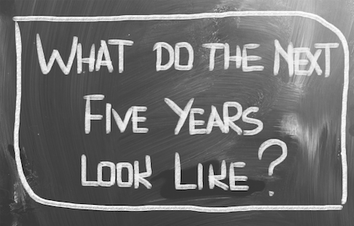 In a survey from the John Templeton Foundation, 60% of 2000 respondents said they "either never express gratitude at work or do so perhaps once a year." Yet another survey from cloud consultancy Appirio found that 60% of job seekers said they cared the most about whether the staff at their prospective employer felt appreciated. And repeated studies confirm that gratitude helps both engagement and productivity. A recent Fast Company article suggested five ways to add more gratitude to your workplace. We endorse them!
We want to hear: Do you feel you say thank you enough, or that you are thanked enough at work? What will you do to add more gratitude to your workday? To join the conversation, click "comments" below on our Community of Practice Forum. If you would like to read more about creating a habit around masterful communication, check out our book: Be Quiet, Be Heard: The Paradox of Persuasion
0 Comments
 Everyone uses filler words, like “um” and “ah”—from Kim Kardashian to Barack Obama. When we are speaking spontaneously, we probably use them every five seconds. Filler words “appear in every language and every culture,” says Steven D. Cohen an assistant professor of Communication at the University of Baltimore. And although they have a “bad reputation” recent research suggests they may have benefits--aiding listener recall and comprehension. Filler words in moderation can be a tool for persuasion and influence. The secret is knowing which words to use, managing frequency, and consciously choosing where they occur in a sentence. Cohen adds that any type of filler words used mid-sentence, are less noticeable than those used at the beginning or end. To eliminate the use of filler words at the start or end of a thought, or to cut down on their use significantly, Cohen recommends recruiting listeners to clap when you use a filler word so you can get into the habit of omitting them. His most salient tip, however, is replacing filler words with a pause. “A simple pause can have a dramatic impact on our filler word use and how other people perceive us.” We want to hear: Do you notice when others use filler words? Do you mind? Do you feel you use them too much, and if so how have you tried to reduce this? To join the conversation, click "comments" below. If you would like to read more about creating a habit around masterful communication, check out our book: Be Quiet, Be Heard: The Paradox of Persuasion  With so much noise out there, how can your message be heard? In her new book, Impossible to Ignore: Creating Memorable Content to Influence Decisions, cognitive scientist Carmen Simon, PhD, says it is crucial to craft messages according to how the human brain works. “Most people worry about not remembering the past,” says Simon ”In business, what we should be worried about is whether our audiences remember us in the future…where decisions happen.” When we attempt to influence people, our audiences are likely to make decisions about our messages at a future point. This point can be minutes, weeks, or months later. The key ingredient to business success is people remembering us in the future, and making a decision in our favor. Simon notes that memory works via associations. The stronger the associations we enable, the more likely someone will take the action we want them to take. Her advice: Be clear what it is you want your audience to remember and implant cues (verbal, visual, audio) that will stick. Memorable phrases (“Get curious, not furious”) and content that makes people smile are two winners. We want to hear: What techniques do you use to get people to remember the essence of your message? What are some cues that you remembered and that caused you to take action? To join the conversation, click "comments" below on our Community of Practice Forum. If you would like to read more about creating a habit around masterful communication, check out our book: Be Quiet, Be Heard: The Paradox of Persuasion.  Another day, another prediction. Election season means endless punditry, but who is best at predicting the future? In a recent NPR “On the Media” interview University of Pennsylvania professor Philip Tetlock, author of Superforecasting, says all predictions are not created equal. Over many years, Tetlock and his colleagues ran a large-scale experiment in forecasting called the Good Judgment Project, which trained and tracked the performance of over 2,000 individuals, and systematically evaluated the factors that lead to better forecasting behaviors. The takeaway: Foxes make better predictors than hedgehogs. Hedgehogs are people who predict based on their firm belief in what they see as a few fundamental truths. Foxes draw on diverse threads of evidence and ideas. Foxes are also more likely to adjust their forecasts when new information surfaces; hedgehogs often discount new data that contradicts what they think they already know. We have talked about selective perception often in our courses. After we create a belief theory about another person, we too often fail to notice new data that could contradict our belief about the individual. That’s dangerous hedgehog living! We want to hear: Do you consider yourself a fox or a hedgehog? How adept do you think you are at forecasting the future? To join the conversation, click "comments" on our Community of Practice Forum. If you would like to read more about creating a habit around masterful communication, check out our book: Be Quiet, Be Heard: The Paradox of Persuasion |
Archives
July 2024
Categories
All
|
|
Glaser & Associates, Inc.
Executive Offices 1740 Craigmont Avenue, Eugene, OR 97405 541-343-7575 | 800-980-0321 [email protected] |
© 2019 Glaser & Associates. All Rights Reserved.


 RSS Feed
RSS Feed